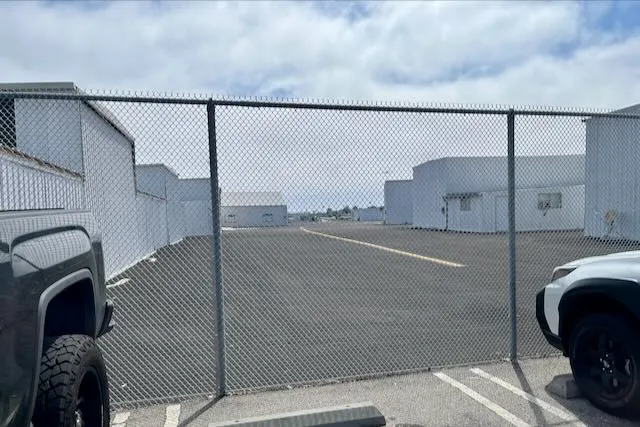This article first appeared at the Healthy City Local.
As I discussed in my post on Monday, the process for planning the conversion of Santa Monica Airport into a park has produced three aspirational “scenarios.” While no one would expect or desire that Sasaki, the park designers hired by the City, would have by now a definitive plan, so far the process has not generated plans that would likely be built in the five, or 10, or even 15 or 20 years, after the airport closes Jan. 1, 2029.
The upshot of these “big plans” is the inclusion of extensive “revenue-generating” uses in two of the three “scenarios.” These uses would require a vote to amend Measure LC, although the City Council could use zoning amendments to make some revenue-generating uses, those that are are consistent with parks, LC-compliant.
Other suggested uses could not be made compliant by the council. They include (in one or both of the non-LC compliant scenarios) housing or commercial development, a hotel, and/or a Hollywood Bowl-sized amphitheater. These uses are themselves highly contingent because they also would need to be planned, through a public process, and then approved by voters, and then, of course, financed.
So at a time when City Council needs to focus on reality, we have speculation (aspirational designs) piled on speculation (hypothetical revenue generators).
Meanwhile, adding to the speculation is that the airport won’t close for more than three and half years. We don’t know what the City’s budget will look like then, we don’t know what interest rates will be, we don’t know what regional, state or federal grants might be available, and we don’t know – well, I could go on.
Perhaps I should have more faith (and patience). Based on a conversation I had with a Sasaki designer at the City’s May 17 event where the three scenarios were unveiled, and on remarks Amber Richane, from the City’s Public Works Department, recently made to the Santa Monica Democratic Club, it appears that Sasaki and staff will be generating a “phasing” plan for park development. This will, apparently, include a “Phase Zero” for the first five years or so. Phase Zero would include environmental remediation, if necessary, and park development that can be paid for from leasing revenues from the airport (which are considerable). (Ms. Richane also said there could be money for water projects from a different fund.)
Let’s hope this phasing plan will be released before the City Council meeting July 8. Then the council will pick and choose what elements will go into the plan that will be subject to environmental review. This council needs to focus on what can be done when the airport closes, not what might happen long after they have termed out. The preferred alternative for the EIR must be LC-compliant.
In the meantime, let’s consider revenue generation. Specifically the idea that housing development can help pay for the park. As supporter of housing development I have always been skeptical when I hear people assume that housing development can pay for anything other than its own development. Why? Maybe it’s because over the past 30 years the two most prolific for-profit housing developers in Santa Monica, Craig Jones and Neil Shekhter, both ended up in some form of insolvency. As for affordable housing, it requires its own subsidies.
Development is a tough business.
But then, historically nearly all housing development, especially since World War II, has required subsidies. Do you think that suburban developers would have made so much money without the highways, sewers, water systems, and other infrastructure government built, or the home loans government insured?
There is a lot of anxiety going around, much of it propagated by pro-airport people, but some of it coming from pro-housers, about how Santa Monica can’t afford to build a park, even though it already owns the land, the most expensive element of park-building. No one, however, seems to talk about how difficult and expensive it would be to build housing at the airport.
Consider the infrastructure costs. To give Sasaki and staff credit, in their scenarios they located all of the revenue generating uses on land at the airport that is already to some extent developed, but do we expect that those areas with their crumbling hangars and other sheds and shacks have the water and sewer and power infrastructure to support extensive housing?

Consider that there’s no connection with transit corridors except on the northern and eastern edges (and not good connections there, either). On the southern parts of the airport, where the scenarios locate a lot of development, for vehicular access there is only Airport Avenue, with, on the western end, its woeful intersection with 23rd Street, Dewey Steet, and Walgrove Avenue. So who pays for the transportation infrastructure? (Yes, the park will also need more access, but not on the level of thousands of units of housing.)
To use a phrase I’ll borrow from an email sent to me by a pro-housing, urbanist friend, putting affordable housing at the airport would be to put low-income people “away from the public transit backbone of Santa Monica.”
One reason real estate development is a dicey business is that it’s hard to predict interest rates over the lengthy periods of time it takes to get permits and to construct housing. At the moment there is a pile of approved housing developments in Santa Monica that are stalled because of current high rates. We don’t know what interest rates will be when it comes time to “generate revenue” for the park.
The proponents of housing at the airport say that state housing element law will require the City to use airport land for housing under the next Housing Element cycle. This is false, as the City will be able to satisfy future state housing requirements elsewhere (as shown in the 2010 Land Use and Circulation Elements of the General Plan).
Meanwhile the housers fail to take into account the impact of the Surplus Land Act (SLA) on financing housing.
Under the SLA the City cannot dispose of the airport land, which includes selling it or leasing it for more than 15 years, without, and I admit I’m simplifying here (the law is complex), offering the land to affordable housing developers, who then would have the right to negotiate with the City for a reasonable price to acquire the land. The sounds good for affordable housing developers, but at what price? What’s reasonable? Realistically, affordable housing developers would need to get the land for free.
Consider for-profit developers. What developer can get financing if the developer only has control over the property for 15 years? If the financing needs more than 15 years of control, then the developer is thrown into the unknown of the City having to negotiate with affordable housing providers. In any case, it’s a long and complicated process. Housing development would not be a quick way of generating revenue.
I get it that pro-housers couldn’t care less if housing would subsidize the park. As I said, as a long-time houser, I’m always skeptical of putting more burdens on housing development. But what the City Council asked the planners for was development that would subsidize the park, and it’s on that basis that the planners’ scenarios should be evaluated. Independent of that, because of the infrastructure issues, housing development on the airport land would be significantly more costly than development elsewhere in the city.
Next week I’ll venture into some speculation of my own – on how the City could start building the park in 2029.
Thanks for reading.
